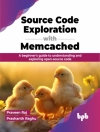Going from the philosophy and concepts to the implementation and user study, this book presents an excellent overview of Japan’s contemporary technical challenges in the field of human–computer interaction. The next information era will be one in which information is used to cultivate human and social potential. Driven by this vision, the outcomes provided in this work were accomplished as challenges to establish basic technologies for achieving harmony between human beings and the information environment by integrating element technologies including real-space communication, human interfaces, and media processing. Ranging from the neuro-cognitive level to the field trial, the research activities integrated novel perceptual technologies that even exceed human ability to sense, capture, and affect the real world.
This book grew out of one of the CREST research areas funded by the Japan Science and Technology Agency. The theme of the project is “the creation of human-harmonizedinformation technology for convivial society”, where 17 research teams aimed at a common goal. The project promotes a trans-disciplinary approach featuring (1) recognition and comprehension of human behaviors and real-space contexts by utilizing sensor networks and ubiquitous computing, (2) technologies for facilitating man–machine communication by utilizing robots and ubiquitous networks, and (3) content technologies for analyzing, mining, integrating, and structuring multimedia data including those in text, voice, music, and images.
This is the second of two volumes, which is contributed by eight team leaders. Besides describing the technical challenges, each contribution lays much weight on discussing the philosophy, concepts, and the implications underlying the project. This work will provide researchers and practitioners in the related areas with an excellent opportunity to find interesting new developments and to think about the relationship between human and information technology.
Mục lục
1 Onga CREST Project: Building a Similarity-aware Information Environment for a Content-Symbiotic Society.- 2 Development of a Sound Field Sharing System for Creating and Exchanging Music.- 3 User Generated Dialogue Systems: u Dialogue.- 4 Enabling Harmonized Human-Robot Interaction in a Public Space.- 5 Behavior Understanding based on Intention-Gait Model.- 6 Inter-Personal Displays: Augmenting the Physical World Where People Get Together.- 7 Reading-Life Log as a New Paradigm of Utilizing Character and Document Media.- 8 Pedagogical Machine: Studies Towards A Machine That teaches humans.- 9 Epilogue.
Giới thiệu về tác giả
Editor: Toyoaki Nishida has been a professor in the Graduate School of Informatics, Kyoto University, since 2004. His research centers on artificial intelligence and human–computer interaction. He serves as the research supervisor of the JST-CREST research area on the creation of human-harmonized information technology for convivial society. He is a former president of the Japanese Society of Artificial Intelligence.












